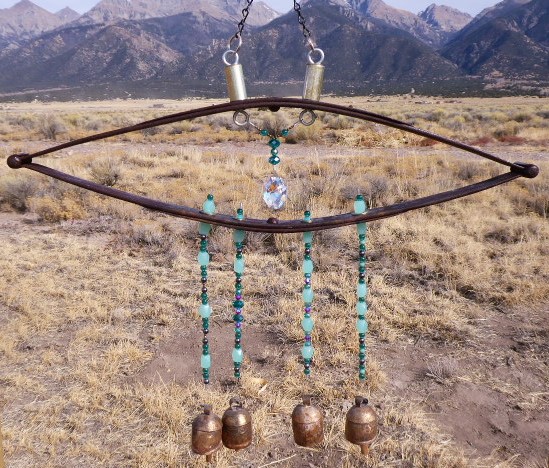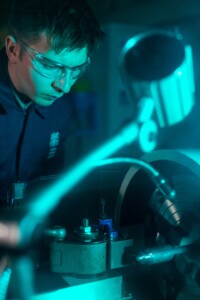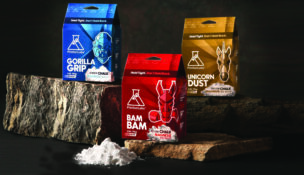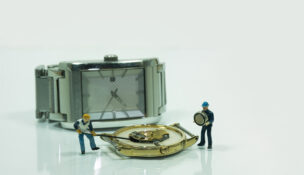Made in Colorado 2023 — 10 Stories Behind the Colorado Craft
From burritos to ski boots: 10 makers and the stories behind their products.
Eric Peterson //January 13, 2023//


Made in Colorado 2023 — 10 Stories Behind the Colorado Craft
From burritos to ski boots: 10 makers and the stories behind their products.
Eric Peterson //January 13, 2023//
These businesses have at least one thing in common: They all make products in Colorado.
There are some subsets with other commonalities. Two, coincidentally, were born in garages in Windsor. Three others have new ownership since 2020.
After that, it’s all over the map. One is sending cutting-edge technology to space. Another makes spillway gates for dams worldwide.
Another one upcycles scrap metal into wind-powered music. Yet another sells burritos to convenience stores nationwide. And another aims to revolutionize the ski boot.
It underlines the sheer breadth of the products made in Colorado. While the manufacturing base is not as established as places like the Rust Belt and the Southeast, it is also unconstrained by tradition and underpinned by innovation.
And that might be exactly what the domestic industry needs as it rides a winning streak fueled by the return of manufacturing from China and other overseas locales — no matter whether it lands in Detroit or Kremmling, Colorado.
READ — MADE IN COLORADO: Outdoor Edition
Home & Lifestyle
Bead It With Metal
Crestone
Rose Burek says an adult welding class she took in Ignacio, Colorado, planted the seeds for Bead it With Metal circa 2008. “I really enjoyed it, and made some standing sculptures,” she says. “I found this muffler that I thought was really interesting. I brought it to class, and I made a sculpture from it.”
That sent her on an artistic journey where she’d source materials from scrap metal yards. “I just started picking up stuff,” says Burek. “I didn’t even know what I was going to do with it.”
An epiphany hit when she added beads and brass bells from India to make windchimes. “Somehow, it all just kind of clicked.”
Burek relocated from southwestern Colorado to Crestone in 2012, but continues to visit scrap yards in Cortez and northwestern New Mexico. “I’ll come home with 400 or 500 pounds of metal,” laughs Burek. “I like to use a lot of farm implements, ones that they use for plow discs.”
The pursuit has fed her windchime-making enterprise to about one a week for the last decade, or more than 600 in all, sold online and at Crestone Artisans Gallery, Rabbit Brush Gallery in Lyons, and Aspen and Evergreen Gallery in Estes Park.
Windchimes start at about $140, and bigger pieces run more than $300. “I usually make three to five strands of the beads and the bells,” she says. “I think the biggest one I’ve made now is about nine strands of beads onto the metal.”
“Colorado’s a good market,” adds Burek, who retired from the state’s School to Work Alliance Program before going full-time with Bead it with Metal. “People are into upcycling and recycling, and I think they appreciate it.”
Apparel & Gear
Zay Ski Boots
Longmont
Staked with an idea for a better ski boot, CEO Rex Deitesfeld founded Zay Products with his wife, Karen, in 2011. “We had a manufacturing company previous to this ski boot,” says Rex. “On one of my cold-call adventures back in 1985, I ran across a gentleman by the name of Ed Chalmers.”
Chalmers was a longtime ski-boot engineer who devised a boot with adjustable cables — and better biomechanics. “It prevents the bulging of the boot, keeps the foot from having heel lift, and also — instead of putting downward pressure on the top of your foot like a traditional boot — pulls in like a boa constrictor,” says Rex. “So it’s surrounding your whole foot structure.”
After selling Intec, their previous manufacturer of insulation-blowing equipment, the Deitesfelds teamed with Chalmers to start the company. Zay “reinvented the boot around the cable system,” says Rex, and finalized the design in 2015.
“It just made mechanical sense,” says Rex. “It solves a lot of issues that ski boots even today still have.”
Manufacturing the boot, however, involved a seven-year journey. The company investigated contract manufacturing elsewhere, but found Longmont to be a better locale. The decision was partly due to relationships cultivated during the Deitesfeld’s Intec days.
“We will be molding the shells, we will be assembling them, we’re using subcontractors from local markets,” says Rex. “It’s not that cost-effective to have it made overseas or even have it toll-produced. I’ve been in manufacturing for 35 years and looked at all of those models, and it just doesn’t make sense.”
With the domestic model, Zay launched four boot models that start at $850 at retail in November 2022. The company’s distribution model allows for “just-in-time delivery” for in-season restocking, says Rex.
Beyond the state’s superlative slopes and manufacturing base, Colorado has proven a great base for Zay due to government support. “The State of Colorado does a really good job with the outdoor industry,” says Rex. “Utah doesn’t even really compare.”
Beer, Wine & Spirits
State 38 Distilling
Golden
Don Hammond was a health-care executive in Indiana and Michigan for more than 30 years before taking a turn into distilling. He moved to Colorado in 2019 and took over as majority owner of State 38 at the beginning of 2020.
“People always chuckle and they’re like, ‘That was a little bit of a pivot,’” says Hammond. “I say, ‘Well, not really. I’m still doing health care to a different degree.’”
State 38 founder Sean Smiley launched the Golden distillery in 2013 after building his first homemade still in college. (It’s now on display in the tasting room.) “Sean started this business as a bit of a hobby, a bit of a man-cave kind of thing,” says Hammond. “To his benefit, the products started to get some notoriety.”
Smiley’s software career led him to look for a partner who could take over day-to-day operations, and he connected with Hammond.
Right out of the gate, the COVID-19 pandemic was something of a double-edged sword. “It did give us the opportunity to take a step back,” says Hammond “We rebranded and relabeled and rebottled almost all of our spirits to really freshen them and give them each their own identity.”
State 38 now has three distinct brands: State 38 whiskeys, Hacedor agave spirits, and Damn Smooth, with vodka, gin, whiskey and absinthe.
The whiskeys are distilled on Colorado-grown grain, meaning the fermented liquid isn’t filtered before distillation. “That’s kind of the traditional Irish-Scottish way to produce whiskeys,” says Head Distiller Wes Murack, who joined Hammond in 2022. “We give it as much flavor from that locally grown grain as we can.”
For the Hacedor label, State 38 sources blue agave syrup from Jalisco, Mexico. “That’s at 5,000 feet, so it’s from a pretty similar climate,” says Murack. “It’s definitely a tricky fermentation, for sure, because it’s basically all sugar.”
State 38’s third brand, Damn Smooth “fills a void in the marketplace” for bars seeking better well spirits, says Hammond. “We recognize there’s a lot of rotgut out there. There’s a lot of bad spirits that are wells, especially a lot of bad vodka.”
Hammond says the three labels complement each other: “We are a house of brands instead of a branded house.”
And that puts State 38 in good position to supply an increasingly sophisticated tippler. “From my perspective, Colorado is a brown state,” says Hammond. “They like their whiskeys here, and that’s certainly beneficial. I also think Colorado is a very egocentric place in that people like things that are made in Colorado.”
The raw numbers over the last decade bear his argument out: “We were the 16th distilled spirits license in Colorado. They are now in the 300s.”
Industrial
Origin
Windsor
OIGIN has come a long way in five years. “We started in 2017 out of my garage,” says CEO Matthew Chase.
From there, he quickly kickstarted the company’s manufacturing capabilities by acquiring D & K Engineering, a small machine shop that had been in business for more than 30 years.
ORIGIN quickly found demand from a wide range of large, multinational customers. “We were doing quite a bit of work for Vestas and CoorsTek and Cummins, just a whole slew of customers who were looking for contract manufacturing support,” says Chase. “Companies like Agilent, Schlumberger, Siemens.”
The company expanded from Chase’s garage into 10,000 square feet of facility space in Windsor and acquired the 12,000-square-foot J.W. Reffels Metals Foundry in Englewood and a 20,000-square-foot metal fabrication shop in Clovis, New Mexico. ORIGIN has about 50 employees between the three facilities.
While contract manufacturing propelled the company’s early growth, ORIGIN has since launched a pair of brands in ORIGIN Tactical Solutions (weapons targets) and AXIS Poles (concealment of network infrastructure). “We got really tired of the swings and the different capacity issues that you have in contract manufacturing, so we started investing in our own products,” says Chase.
ORIGIN Tactical Solutions sells through retail chains like Tractor Supply and Sportsman’s Warehouse. The targets, in shapes ranging from Bigfoot to pterodactyls, are made from leftover bulletproof steel for armored vehicles.
Now accounting for about half of ORIGIN’s revenue and growing, AXIS is “building 5G poles for Crown Castle, for AT&T, and for Verizon,” says Chase. “We’ve really gotten our big break on the concealment stuff. We have some neat technology that we’ve developed, all with the same engineers and the same machines that we were using for our contract manufacturing and contract engineering work.
Our product is pretty unique and very attractive, and has some great benefits from a cost perspective,” he adds. “We watched a lot, specifically in small cell, how things were built and learned how not to build things. We designed our systems to be a lot more manufacturable and a lot more cost-effective, and that’s given us the competitive edge that we’ve needed to get into the market.”
Chase says the Colorado location has helped it build its business while bootstrapping all of the growth. “They like that we’re in the backyard here, and it’s really locking us into more of a national program with some of our customers,” he says. “I think that us being located in Windsor really helped us deploy a little bit faster and more practically.”
Electronics & IT

Alio Industries
Arvada
The manufacturing world is finally catching up with ALIO Industries. Bill Hennessey founded the manufacturer of motion control technology in 2001, and it has set industry standards for precision ever since.
Director of Sales and Marketing Peter Lehner says ALIO’s products are increasingly in demand as everything gets smaller. “Any part that gets smaller needs to be positioned more precisely,” he explains. “A camera 20 years ago was mostly mounted manually. Now we’re talking about a super complex 4K camera for a phone. It gets smaller and smaller, more and more parts, higher and higher resolution.”
The status quo “for six-dimensional positioning is a Stewart platform — basically a hexapod with six legs,” says Lehner. Hennessey started the company to improve on that limited design, and Lehner says the same philosophy remains front and center today: “How can I decomplex motion and how can I ensure any point in space can be reached as precisely as possible and as repeatable as possible?”
Used in a wide range of manufacturing applications, ALIO’s patented Hybrid Hexapod “is still probably five years ahead of its time in 2022,” says Lehner, forecasting a coming wave of adoption in sectors ranging from photonics to OLED displays. “A lot of the applications that require hexapods are applications that are on the edge of getting really industrialized.”
He sees a tipping point for many industries in the next decade. “The moment they tip, they cannot go somewhere else, because we are the ones who have the patent.”
New York-based Allied Motion acquired 18-employee ALIO in 2021, but it continues to manufacture in Colorado. “We are quite proud that we are able to handle all of our mission-critical manufacturing in-house,” says Lehner. “We literally start with a metal block and end up shipping the final product.”
To facilitate that, ALIO’s location on the western side of metro Denver offers access to engineering talent. University of Colorado Boulder and Colorado School of Mines are “two amazing engineering schools next door,” says Lehner. “They produce brilliant engineers. Being close to those two universities is a big thing for us.”
Medical
Quorum Prosthetics
Windso
I started working in this industry when I was 19 years old,” says Joe Johnson, founder and CEO of Quorum Prosthetics.
As a paralympian skier in the 1990s, Johnson had a large prosthetics company as a sponsor. “I was like, ‘This would be a good living for me. I love working with my hands, I love working with people,’” he remembers.
Johnson subsequently started Quorum in his Windsor garage as a fabrication studio in 1998. “It turned into a clinic. I have about 400 prosthetic patients that rely on us.”
The 14-employee company now has clinics in Windsor and Denver, as well as Cheyenne, Wyoming, and manufactures upper and lower prosthetics in Windsor.
Master technicians build custom designs using traditional composites techniques, but Quorum is also leveraging additive manufacturing to realize superior designs. Quorum won an Advanced Industries grant from the Colorado Office of Economic Development and International Trade to move into 3D printing in 2019.
Johnson says he wasn’t sold on 3D-printed prosthetics until he learned about Hewlett-Packard’s Multi Jet Fusion 3D-printing system. “It’s very precise, you can highly engineer your design, and you can be in control of the quality control within 1/5000th of an inch — so many factors that help the manufacturing now.”
Quorum’s patented Quatro lower-limb socket is one product that leverages 3D printing. Traditional sockets tend to loosen over the course of a day and require time-consuming refittings, but the Quatro “allows the patient to do micro-adjustments throughout the day and have a more comfortable fit,” says Johnson.
Built around the concept of the Archimedes (or compound) pulley, the Quatro is winning awards and kudos from a growing base of users, including Johnson himself: He’s worn one for more than 2.3 million steps. Acknowledging his bias, he calls it “by far the most comfortable socket I’ve ever had in my life” in a testimonial video on LinkedIn.
“Traditionally, you make these sockets in a wet lamination of carbon fiber, which is very laborious and very dirty. It could take up to eight to 12 hours to make one of these with one technician.”
That’s cut down significantly using the HP. “In the future, they’ll be done in a matter of minutes,” says Johnson.
Quorum’s customer base is regional, but Johnson sees national potential for the Quatro with partners printing for customers in other locations. “Through digital design, it could easily be at any clinic in the U.S. or the world now,” he notes.
Energy & Environment
Obermeyer Hydro
Wellington
Originally from Colorado’s Roaring Fork Valley, Henry Obermeyer launched his namesake manufacturer of water control technology in Connecticut in 1988.
“I was working for my step-grandfather’s gear company right out of college as a metallurgist and mechanical engineer. One of their two plants had some old hydro turbines on a river that hadn’t been in service for some time. So I asked if it would be okay to get one of them up and running. The answer was yes, as long as it was on my own time and on my own nickel.”
To fix the turbine, built in the early 1900s, Obermeyer “bought a leather belt made of 32 cowhides and got it generating onto the grid,” he says. Publicity led to a slew of inquiries to repair other old water turbines, and Obermeyer Hydro was born. Obermeyer moved back to Colorado in 1990.
“I got tired of the dead fish and toilet paper in the old machines, and decided to do new machines. About 1990 or so, the market for that went in the tank. By that time, I developed a pneumatic spillway gate that was revolutionary. It was way better than the previous gates for open channel water control, so I focused on that.”
Predecessors used hydraulic cylinders that could rust and leak, and Obermeyer Hydro’s rubber-hinged gates were better and more cost-effective for installation and operation on rivers and dams. Several of the company’s gates are on the South Platte River and Cherry Creek in Colorado.
The gates have “evolved tremendously,” Obermeyer says. “We’ve continued to apply for and receive new patents on it, so for the most part we’re able to keep the market to ourselves.”
Now with more than 50 employees, the company still does some turbine work, but gates represent about 90 percent of the business. “We have something approaching 1,000 projects spread over 40 countries,” says Obermeyer, noting that about half of the company’s work involves hydropower.
Leveraging a global supply chain, Obermeyer Hydro makes gates in Wellington, where the company has an electrical panel shop and a welding shop. “The actuators for our gates are inflatable air bladders made out of reinforced rubber much like the materials used for truck tires,” says Obermeyer. “We do the layup and the vulcanizing of the rubber here.”
It’s something of a recession-proof market, he adds. “If somebody has too much water, they need our gates. If they have too little water, they need our gates. And if they don’t know how much water they’re going to have, they want our gates to be more certain of what they can do with it.”
Aerospace & Aircraft
Pioneer Astronautics
Lakewood
Robert Zubrin worked at Martin Marietta prior to its merger with Lockheed, then took an entrepreneurial leap. “In ‘96, I decided to leave Martin to start my own company in order to have more creative freedom,” he says.
That company, Pioneer Astronautics, “won a small NASA contract, then a medium-sized contract,” says Zubrin. “At this point, we’ve won over 70 contracts, mostly from NASA.”
The contracts have involved R&D on propulsion technology, high-altitude balloons, and life-support systems, he adds, “but the biggest single area of work that we’ve done has been what NASA calls in situ resource utilization. That is, technologies for turning materials on, say, Mars or the Moon into resources — for instance, making rocket propellant out of carbon dioxide and water that exists on Mars, or making oxygen and steel out of Moon rocks.”
Now 20 employees, Pioneer Astronautics has an in-house machine shop that makes a wide range of equipment to test these concepts on Earth and in space. “We make the stuff for our experiments,” says Zubrin. “We make reactors, all sorts of things, we’ve made rocket engines, we’ve made balloon launch systems, life support systems — we make our stuff.”
NASA recently awarded Pioneer Astronautics a contract for the Artemis lunar program. “We have built a machine that is a prototype for a lunar oxygen-making flight experiment,” says Zubrin. “The idea is to send a small unit to the Moon that would be fully automated to show that you can do it. This is a thing we’ve built here — it’s about a cubic meter in size.”
“This kind of work is more convenient to be done at a small, independent company. We can operate much faster. If I need a part, I can send someone to the hardware store. [At Lockheed Martin], you’d send the paperwork to the purchasing department and it would take you two months to get a part.”
Regardless, Zubrin says Lockheed Martin has provided fertile ground for Colorado space startups to sprout. “If you look at the history of American industry, this has been invariant. Henry Ford once worked for Edison. Edison once worked for Western Union.”
Zubrin founded the nonprofit Mars Society in 1998 to push for human exploration and colonization of the Red Planet. Such ideas have since moved from outer orbit to mainstream. “I did convince Elon Musk to make humans to Mars his calling in life,” says Zubrin. Musk found inspiration for SpaceX in Zubrin’s 1996 book, “The Case for Mars”, and joined the Mars Society after meeting with the author.
Food & Beverage
Tres Picosos
Denver
Jane Hartgrove was working at her family’s food manufacturing facility when a convenience store approached her. “They came to us and said, ‘Look at this burrito. I love it, my customers love it, but it’s not made in a USDA facility. I can’t continue to sell this.’”
Hartgrove asked the company behind the burrito to bring production to her facility. “They said no,” she says. “We started serving hot burritos to convenience retailers all along the Front Range. Here we are, 15 years later, and we’ve got a thriving burrito business.”
After first making fresh burritos at her family’s facility, Hartgrove bought the brand, incorporated it as a separate business in 2011, and moved to frozen burritos made at partner facilities in Denver.
“For manufacturing, you pick the right horse for the right course,” says Hartgrove. “I’ve got one who specializes in salsas and sauces, another who specializes in breakfast burritos, and another with protein.”
Tres Picosos burritos are now sold nationally at such outlets as Circle K, TravelAmerica, Pilot, and Flying J. “The burritos can go to San Diego and up to Augusta, Maine. They can go to Seattle and down to Miami. We cover every single square inch of the nation,” says Hartgrove. “Our favorite channel is what’s called non-trad — non-traditional — and that includes convenience stores. Convenience stores, over the years, have been increasing in prestige and quality.”
The company has grown steadily over the years, shipping a whopping 19 million burritos since 2006. Through it all, Hartgrove has focused on keeping things fun. “Picoso is the personification of hot and spicy, so, in essence, Tres Picosos means three hotties,” she says. “I actually gave myself a promotion recently: My business card used to say La Presidenta and now it says La Jefa — which, of course, is the boss lady.”
And she sees Colorado as the perfect state for the company for a number of reasons. “We are a spectacular state for food. The Colorado Department of Agriculture has been so helpful. They’ve got programs that help businesses thrive,” says Hartgrove. “Also, this region is a hotbed for QSRs. Chipotle started here, Quizno’s started here, Einstein’s is headquartered here. So we have some really, really strong manufacturing capabilities here in the state and the region.”
Wildcard
Gennie Shifter
Granby
Tom Phipps invented the Gennie Shifter in 1980. The Gennie — slang for “genuine” — looks like a real manual transmission shifter for a tricked-out 1932 Ford or other rebuilt hot rod, but it actually controls a modern automatic transmission.
A second owner, Todd Gold, moved the company from California to Denver in 2000. The third and current owner, Nick Peterson bought the business from Gold in June 2020.
“I thought it was a way I could stay in Grand County and have a family-owned business,” says Peterson. “It’s made in the USA, and we can keep it made in the USA.”
WIth a background in powersports, Peterson says he relies on a largely local supply chain, including Petrel Industries, a machine shop in nearby Kremmling, and handles a good deal of the manufacturing in-house in Granby.
“Petrel does almost all of our machining work, and we do some in-house,” says Peterson. “We custom bend all of our stainless sticks here at the shop. It’s all polished stainless instead of chrome-plated steel, like our competitors. It never rusts, you can bend it again and it doesn’t flake or anything like that.”
With plans to launch a new line of wooden shifter knobs made by Petrel in late 2022, Gennie Shifter came with a mammoth inventory of knobs of all descriptions. “Some of the characters, they’re handpainted — I don’t know where they’re from,” laughs Peterson. “I think we have 4,000 pool balls we drill to put the inserts in.”
Peterson says he hopes to expand into accessories for dirt biking and snowmobiling, noting that both are personal passions for him and easy to access from Granby.
“We love doing what we’re doing, and we love being up in the mountains. There’s no stoplights,” he says. “I’m very passionate about having a wonderful place to live and a great place to work and a great product to improve and sell all over the world.”
 Denver-based writer Eric Peterson is the author of Frommer’s Colorado, Frommer’s Montana & Wyoming, Frommer’s Yellowstone & Grand Teton National Parks and the Ramble series of guidebooks, featuring first-person travelogues covering everything from atomic landmarks in New Mexico to celebrity gone wrong i
Denver-based writer Eric Peterson is the author of Frommer’s Colorado, Frommer’s Montana & Wyoming, Frommer’s Yellowstone & Grand Teton National Parks and the Ramble series of guidebooks, featuring first-person travelogues covering everything from atomic landmarks in New Mexico to celebrity gone wrong i





























